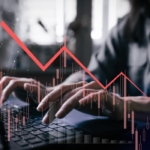
Investors are questioning the Treasury yield surge
Will this time be different? ...
The recent surge in Treasury yields has investors wondering whether this time, the momentum will keep going.
After Pfizer Inc said its experimental COVID-19 vaccine was more than 90% effective early this week, investors rotated out of Treasuries and into sectors that could benefit from an economic upswing such as bank stocks and high-yield credit. That sent the benchmark 10-year yield to its highest since March, edging close to 1%, and the yield curve sharply steeper.
However, previous moves higher in yields have petered out as the Federal Reserve’s near-zero interest rate policy has kept Treasury trading in a tight range.
Some investors say this time may be different.
“This was the ‘vaccine’ moment the rates market had waited for,” said analysts at ING. The “big difference here from previous moves is that we won’t need to take this back.”
Higher Treasury yields can translate into higher borrowing costs and thus can slow growth albeit the boost can also help savers and retirees who may rely on fixed income.
Andrew Brenner, head of international fixed income at NatAlliance, said if people start getting vaccinated and COVID-19 case counts drop, “I would expect the Fed to start thinking about changing their 2023 outlook to 2022 or maybe even the last half of 2021 to start raising rates.”
The Eurodollar curve from 2022-2024, a proxy for the market’s expectation of rate hikes, surged on Monday, noted Michael Purves, head of Tallbacken Capital Advisors. That was striking, he said, as it suggested a vaccine “may in fact be much more important in disrupting the Fed’s ‘zero forever’ policy than fiscal stimulus might ever be.”
There is however some scepticism that linger. The possibility of gridlock in Washington that might hold up the passage of a stimulus bill. What’s more, it isn’t clear how long it might take for a vaccine to be approved by regulators and then rolled out.
“I still believe we are range-bound and will drift lower in yields over the next year,” said Scott Burg, chief investment officer at hedge fund Deer Park Road.
That was seen to some extent in derivatives trading on Monday with bets on the TLT exchange-traded fund, which tracks longer-dated Treasuries, according to Chris Murphy, co-head of derivative strategy at Susquehanna Investment Group.
There had been TLT bets “both ways” on Monday, he said, including a buyer of a call spread “looking for TLT higher and yields lower, saying that this is an over-reaction and things are not going to progress as quickly as the market is all of a sudden thinking.”
That was a contrast to last week, when traders pulled out of bearish bets that long-dated Treasury yields would rise, when it seemed clear Joe Biden had won the presidency but that his Democratic party would face a divided Congress. That drove volume in put options on TLT to the highest since June 2019 on Wednesday, according to data from options analytics provider Trade Alert.
The prospect of gridlock in Washington is one argument for little movement on fiscal policy, and therefore, little movement in U.S. Treasury yields, said Jack Ablin, chief investment officer at Cresset Wealth Advisors.
While a divided Congress is still likely to pass a coronavirus stimulus bill, investors say the amount may be smaller than was expected if there had been a broad Democratic victory.
“The election result seems like it will take between $1 trillion and $1.5 trillion out of fiscal stimulus. So that’s going to push pretty heavily on the Fed,” said Ablin.
Purves said the risk to the market is if Congress coalesces around a lower fiscal package thinking that a vaccine is around the corner, but ultimately vaccine news disappoints. That would make the rotation trade into more economically sensitive assets more vulnerable.
“Let’s see if we get follow-through on this rotation and Treasury sell-off,” said Purves. “We have our doubts.”
Reported by Kate Duguid
Sourced Reuters
For more Finance & Investment news follow i-invest Online.
- Gemini, Google’s new ai model
 Google’s new ai model, Gemini was announced at the end of last year and is about ready to launch as everything is being finalised. Gemini is a powerful artificial intelligence (AI) model developed by Google. Unlike traditional language models, Gemini is multimodal, meaning it can understand…
Google’s new ai model, Gemini was announced at the end of last year and is about ready to launch as everything is being finalised. Gemini is a powerful artificial intelligence (AI) model developed by Google. Unlike traditional language models, Gemini is multimodal, meaning it can understand… - Human creativity meets machine precision
 By embracing a new fusion of AI time-saving tools and human finesse, marketers can look to the future feeling secure and confident, says Laura Lane of HubSpot In the world of marketing, AI still sparks a mix of excitement and raised eyebrows. As someone deeply…
By embracing a new fusion of AI time-saving tools and human finesse, marketers can look to the future feeling secure and confident, says Laura Lane of HubSpot In the world of marketing, AI still sparks a mix of excitement and raised eyebrows. As someone deeply… - CGIUKI Issues Warning To UK Corporate Boards
 CGIUKI warns that UK corporate boards need to step up their governance approach to be ready for artificial intelligence The UK corporate boards must get a move on to prepare for the challenges ahead. Developing effective governance for AI will be fundamental. The primary objective…
CGIUKI warns that UK corporate boards need to step up their governance approach to be ready for artificial intelligence The UK corporate boards must get a move on to prepare for the challenges ahead. Developing effective governance for AI will be fundamental. The primary objective… - Budding entrepreneurs likely to ignore important financial warnings
 Wannabe entrepreneurs are highly likely to ignore poor financial performances in order to pursue their dream, according to new research by emlyon business school and ESC Clermont Business School. The researchers found that in the early stages, new entrepreneurs are so blinded by their dreams…
Wannabe entrepreneurs are highly likely to ignore poor financial performances in order to pursue their dream, according to new research by emlyon business school and ESC Clermont Business School. The researchers found that in the early stages, new entrepreneurs are so blinded by their dreams… - Businesses unintentionally discourage diverse ideas
 Businesses influence the ideas they receive from external contributors by unintentionally signalling which ideas they like, finds research from ESMT Berlin and INSEAD. This leads to a narrow set of non-diverse ideas. Professor Linus Dahlander from ESMT Berlin, alongside Professor Henning Piezunka and PhD candidate Sanghyun Park from…
Businesses influence the ideas they receive from external contributors by unintentionally signalling which ideas they like, finds research from ESMT Berlin and INSEAD. This leads to a narrow set of non-diverse ideas. Professor Linus Dahlander from ESMT Berlin, alongside Professor Henning Piezunka and PhD candidate Sanghyun Park from…
